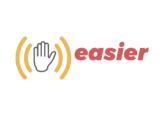For centuries, the education of deaf children has been focused on teaching them to speak. It was broadly believed that only a spoken language would allow deaf individuals to develop within society. Thankfully, the speech-exclusive approach is becoming a thing of the past with sign language education becoming the right of Deaf communities. It is now widely recognized that only sign languages can be true first languages for deaf people.
However, despite the growing awareness and advancements in science, a number of technical challenges still prohibit the full inclusion of deaf individuals. There are several gaps in enabling technologies that must be addressed:
- There are no robust machine translation systems to and from sign languages capable of dealing with language content outside of very narrow domains that could facilitate barrier-free participation of deaf individuals in various activities and situations.
- There are no systems for sign language animation (signing avatars) that go beyond the typical grammar representation for clause formation.
- There are no robust sign language recognition systems that can handle big data, e.g., sign language videos.
- The demand for signed content continues to grow worldwide but the sign language media content creation industry (broadcasters, as well as interpreters and translators) is not adequately supported, which hinders the acceleration of sign language content creation.
- There is an absence of standards for creating new resources to be consumed by the developing sign language technologies. The same goes for standards on efficiency and the naturalness of signing avatars.

